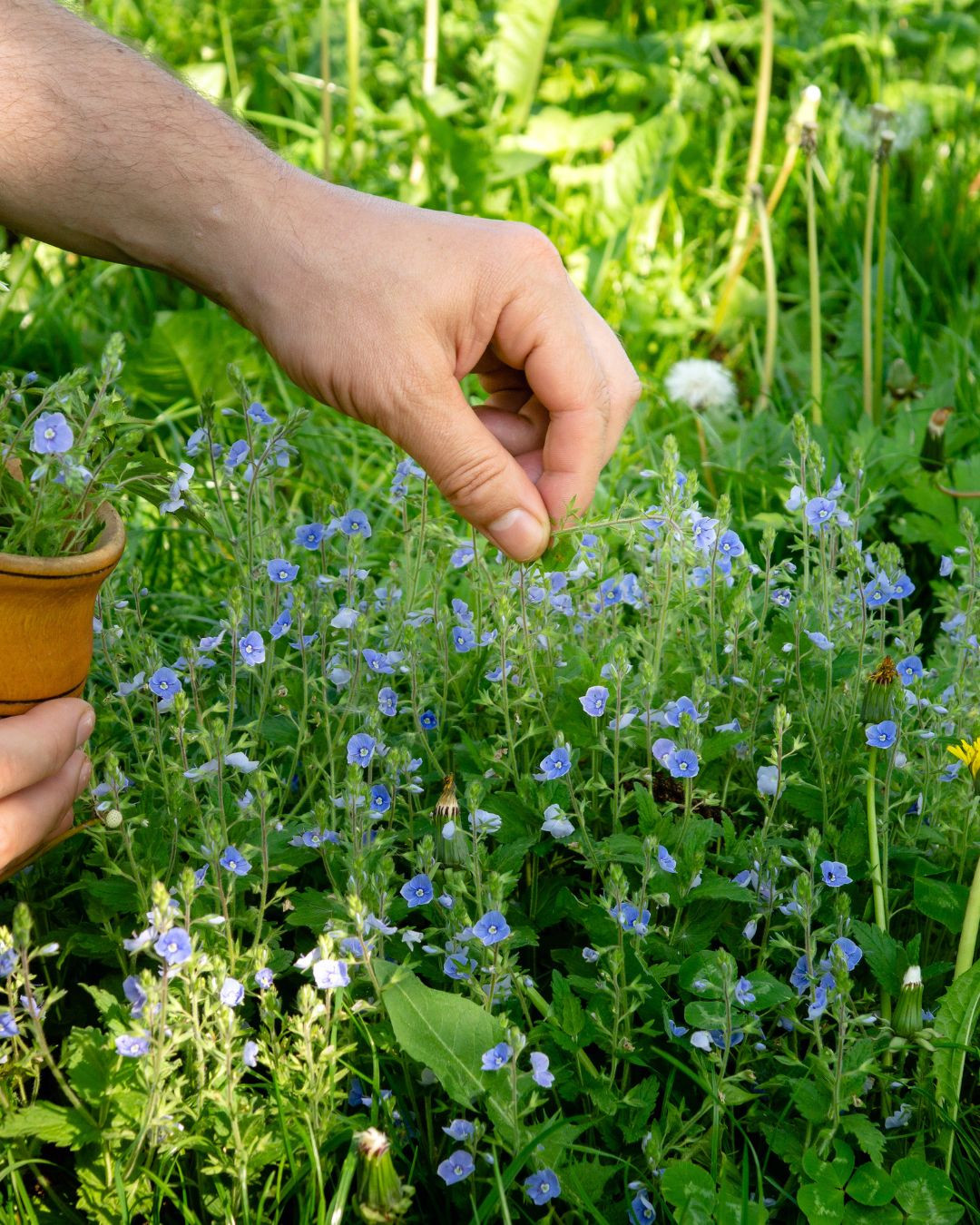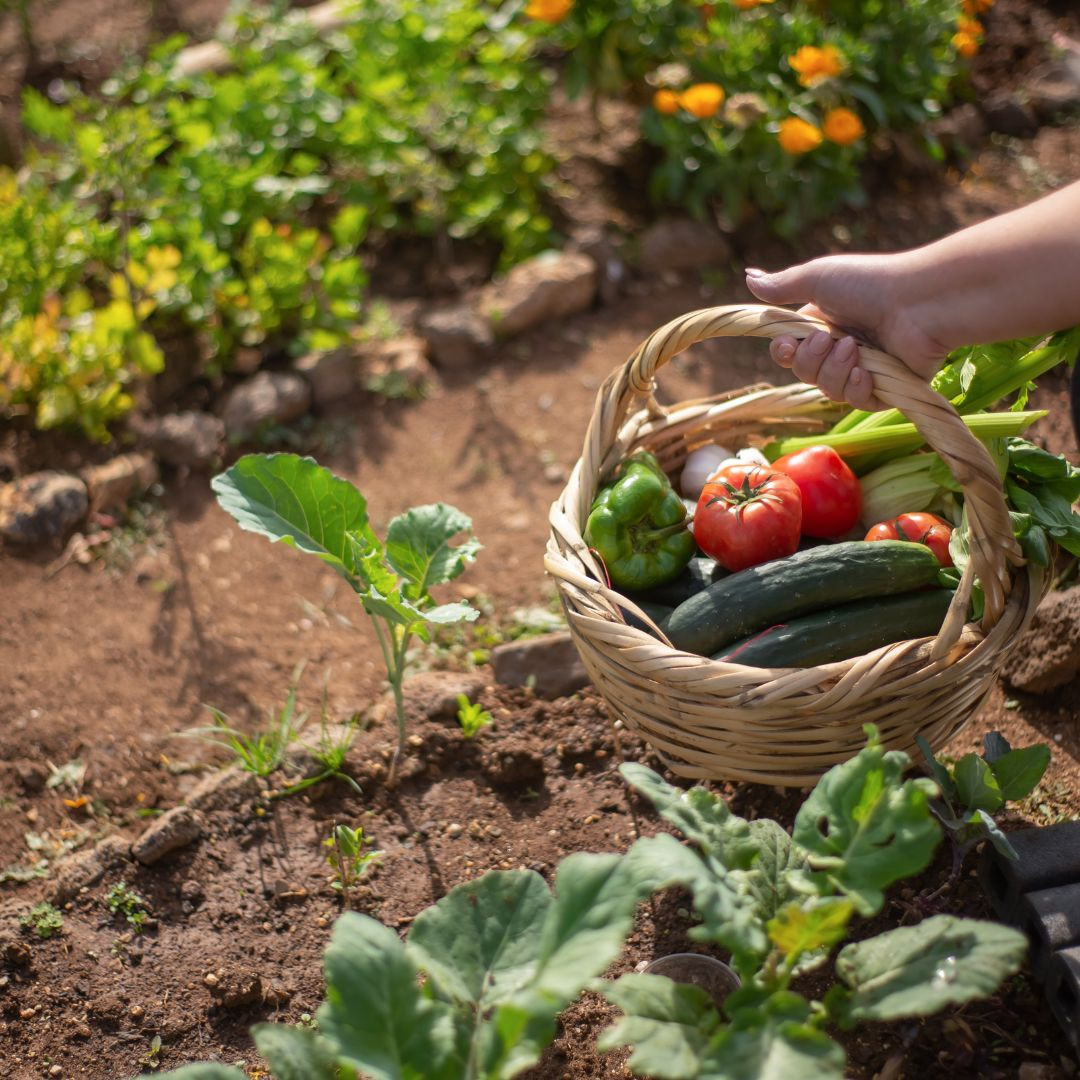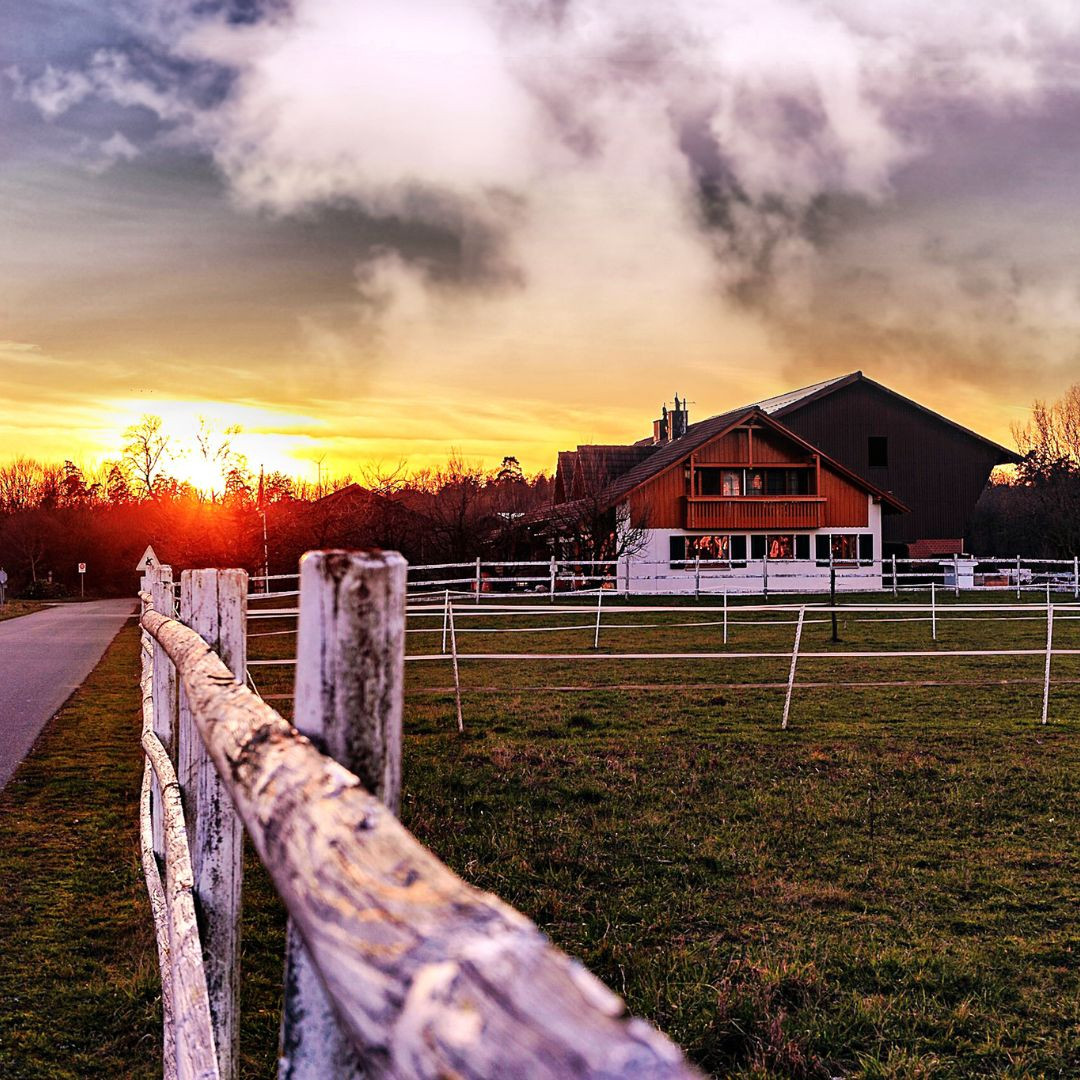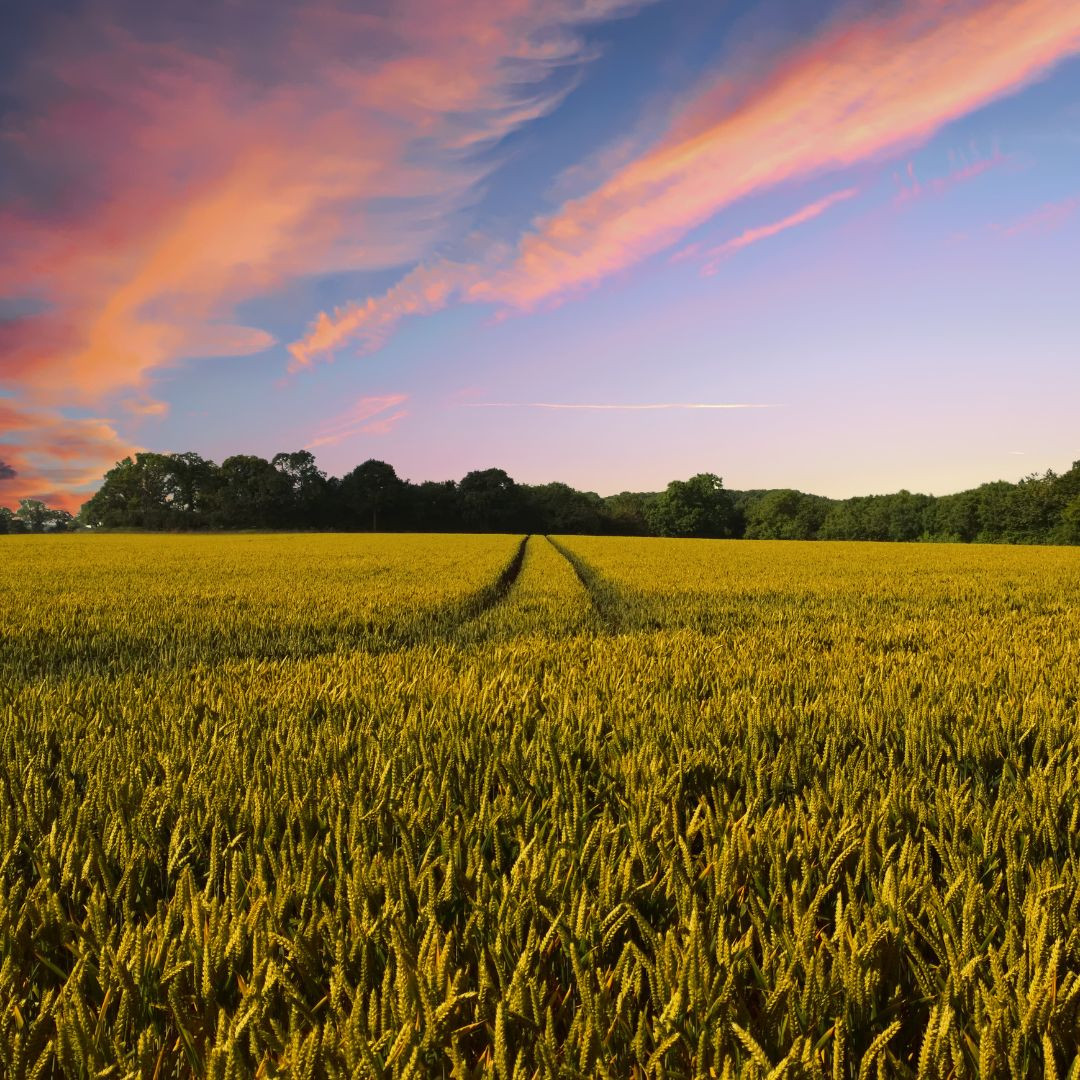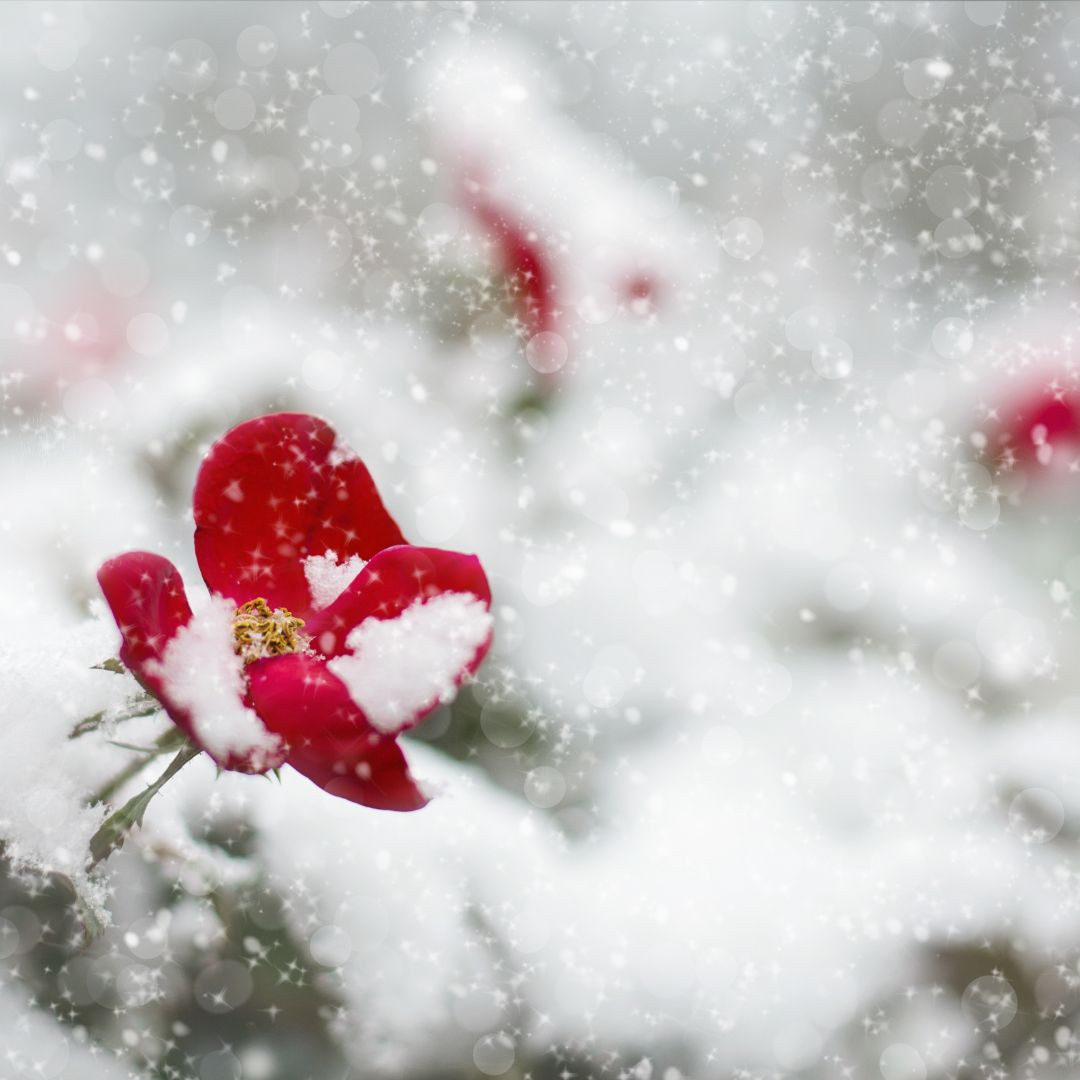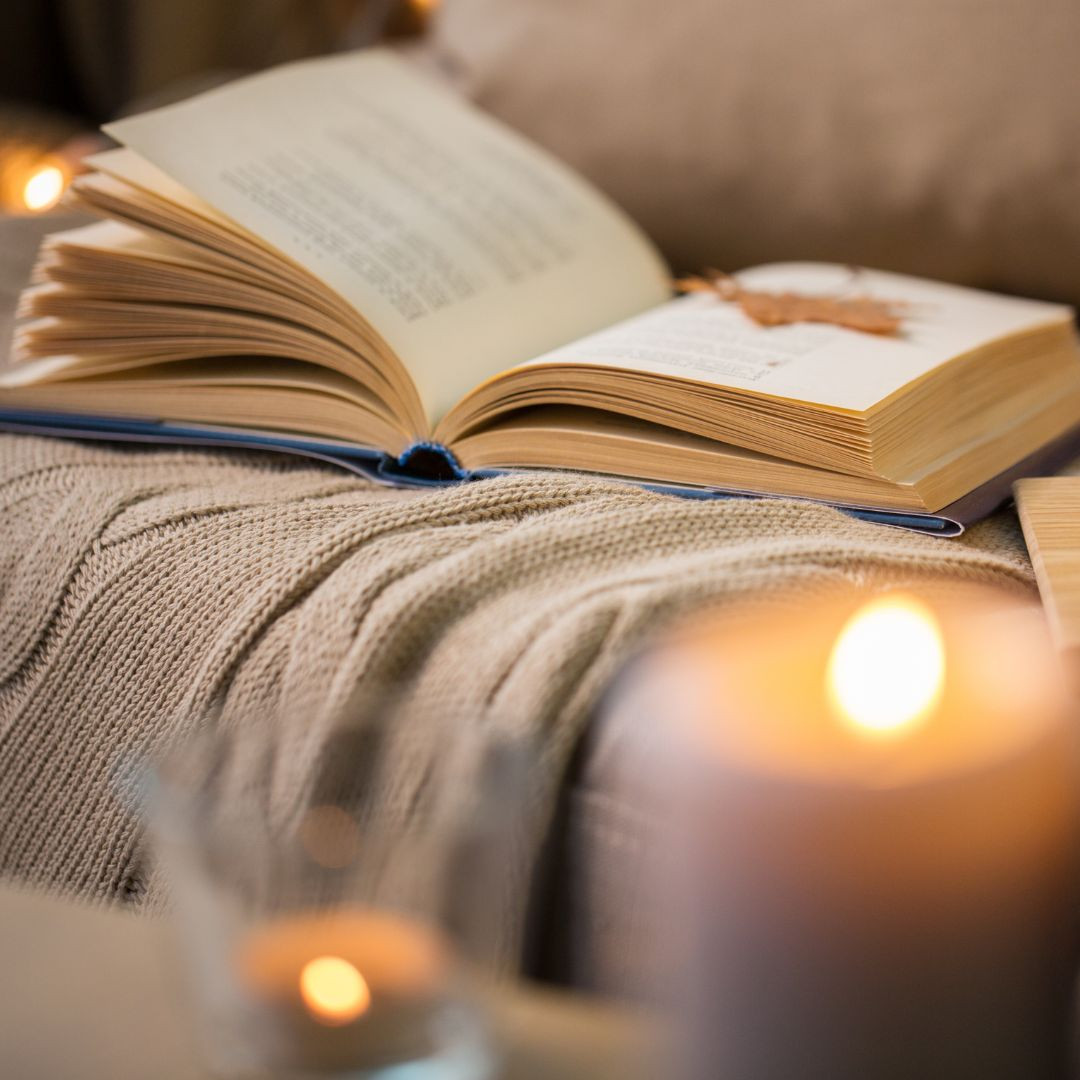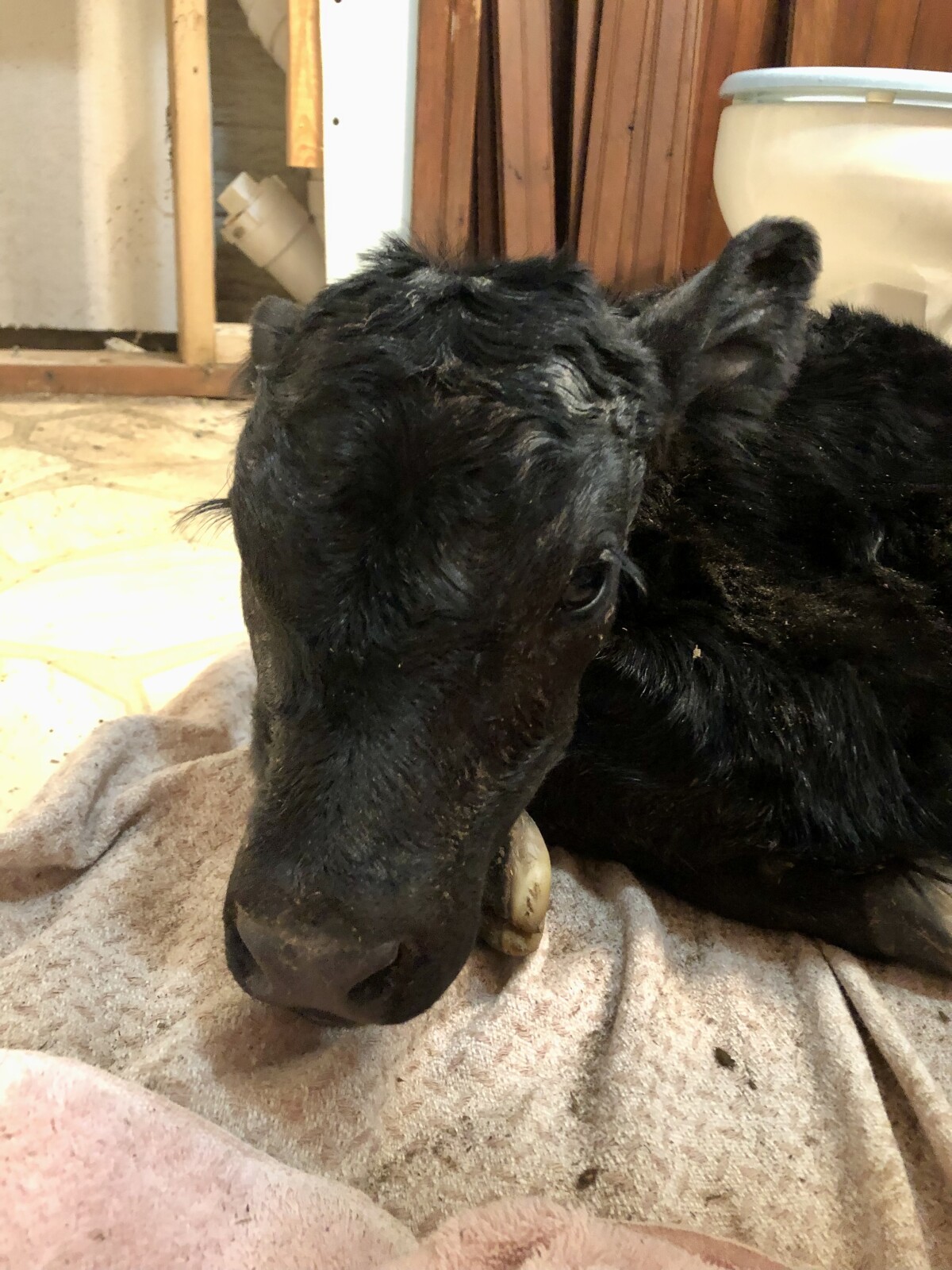
This post may contain affiliate links, which means that I may receive a commission if you make a purchase using these links, with NO additional cost to you.
If you’re a homesteader, chances are you may have thought of raising your own bottle calves. Bottle calves are just like any other animal—they need food, shelter, and care. In this article, we’ll go over all the basics you need to know when caring for a bottle calf. From getting them settled in their new home to what they should eat as they grow up, we’ve got you covered!
Shelter and Supplies
When it comes to shelter, all the calf needs is a small space that is both dry and draft-free. Depending on how large your calf will be at full size, you can either purchase or build a small structure that meets these criteria. The structure should provide enough room for the calf to stand up and turn around in. In addition to shelter, you will also need a calf bottle, with nipple, and milk replacer (by weight). You can find milk replacer at most feed stores. Calf milk replacer is specially formulated to give them all of the nutrition they need to grow healthy and strong.
If you've brought in a cold calf from outside, it's important to warm them up as quickly as possible. It's best if you have an old quilt or blanket handy that can be used as an insulator. A hair dryer is also helpful for warming them up quickly—just make sure not to get too close with the hair dryer! Once warmed up and fed, the calf should settle right into its new home in no time. If you are having problems getting a calf to nurse, check out the post on Getting the Stubborn Ones to Nurse.
As They Grow
Once your bottle calves get older, they'll need more than just milk replacer—they also need hay or alfalfa (grass hay works best) and creep feed. Creep feed is typically a pellet and is specially formulated for younger animals like calves who aren't quite ready for regular feed yet. You'll want to introduce creep feed gradually so your calf has time to adjust before it starts consuming it fully. In addition, always make sure there’s plenty of fresh water available for your calves!
Caring for bottle calves is an incredibly rewarding experience when done correctly; however, there are several supplies needed to ensure their health and wellbeing. Shelters are essential for keeping them safe from predators and harsh weather conditions while bottles, milk replacer, hay and grains provide them with all the nutrients they need for strong physical development. Finally, old blankets and hair dryers can be used to warm any cold or weak calves that may come in so that they can thrive on your homestead!
As I've grown in my journey as an entrepreneur, mom, gardener, and livestock owner, I struggled to find a planner that met my needs and kept me organized. So I MADE MY OWN. You can take a look at it on the link blow and buy it on amazon below
Don't want the whole calendar part? I got you! I pulled the gardening and animal care pages out and put them in a book all their own.
Wanting a community to lean into? Join the FREE Helping Your Family Homestead for Food group! This community is for the Mommas, looking to stay home and raise their kids, but unsure how to keep everyone fed and make ends meet. I share tips from my journey from the office, to half the income and feeding my family from home, while maintaining good nourishing food. Tips include: gardening, bulk buying, caning,/preserving, livestock, homesteading, and home remedies. Your family is precious and this group is to help you gain the knowledge and tools to keep your family well and not reliant on outside professionals. Remedies and tips are easy and simple for the busy momma, time is precious after all, including pregnancy, birth, young kids, and illness. Trust your Momma gut again! This community offers the resources + community you need to help get started on your journey and prepare for whatever future you envision.
Starting to garden doesn't have to be hard! I gathered all the tips I've learned over my gardening learning curve and made them into a simple course to jump start your gardening your life.
Supporting Your Family Naturally From the Inside Out community!! This community is for the Mommas, looking to Support Your Family from Nature for Wellness. Tips range from nutrition, herbals, detoxing, natural cleaning, and essential oils. Basically all the things I’ve learned slowly over the past 5+ years if my journey. We have moved off Facebook, so to better serve our community and be able to discuss openly option for providing for your family in the best way possible.
Join the FREE Community
Join the FREE Community
I've had 3 very different pregnancies. After the first traumatic birth, I learned better and how to care for my body naturally and prevent common pregnancy and birth problems before they arise. This quick course will get you the tools you need to have a naturally healthy pregnancy, labor, and delivery. My first pregnancy I had a normal western medicine all the things pregnancy. My second? I flipped to completely natural, no medicine. Bonus: Preventing Preeclampsia Without the Aspirin & Healing from Birth Trauma
Click here to get the stories straight to your email:
For more on wellness tips click here:
For more on homesteading on your budget click here:
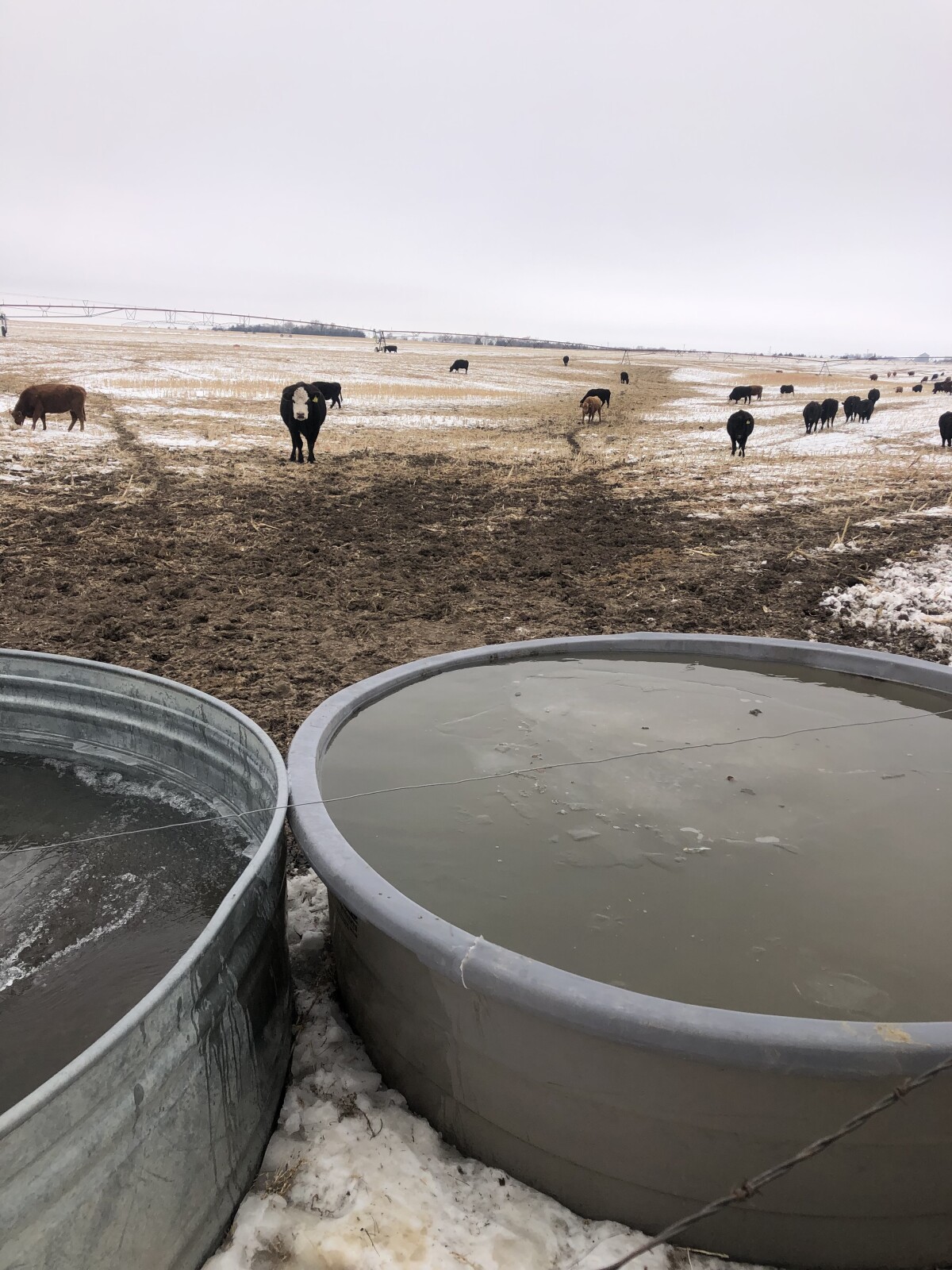
This post may contain affiliate links, which means that I may receive a commission if you make a purchase using these links, with NO additional cost to you.
Have you ever wanted to raise your own beef? It can be a rewarding experience. But before you dive into the world of cattle raising, it's important to know the basics of what's required and which breed of cattle is best for your needs. There are two distinctly different breed groupings of cattle—dairy (jersey, Holstein) and beef (angus, Herford)—so it’s important to understand the differences between them before making any decisions. In this blog, we will discuss why a beef cow is the best choice if you are wanting strictly beef and not milk, as well as what kind of resources you will need to successfully raise beef cattle on your homestead.
Why Choose a Beef Cow?
When selecting a breed of cattle for beef production, there are two main categories to consider - dairy and beef. While some dairy breeds can be used for beef production, if your goal is strictly to produce beef, you'll want to opt for a purebred beef breed. A family milk cow is called the Queen for a reason, and should be treated as such. Beef breeds will typically have larger frames than their dairy counterparts and can reach market weight faster with less feed. Furthermore, they can thrive in nearly any climate and environment, meaning that they can be raised in both cold and hot climates alike with minimal hassle.
Feed and Water
The next step is deciding how you'd like to finish the animal - either through grass or grain finishing. If grass finishing is your route of choice, you'll need direct access to plenty of pastureland (1 to 10 acres per steer depending on climate) or high quality hay (such as alfalfa). Grain finishing requires grain (typically corn), hay (for gut health). More on specific feeding strategies later. Regardless of which method you choose, keep in mind that while steers are usually used for beef production, heifers may also be suitable provided they don't reach maturity and become bred cows.
A clean water source will be needed as well. Typically, this is a stock tank. The tank needs to be big enough to hold 25-30 gallons of water per head per day, at the end of the finishing phase. It can also be 3 feet tall even for calves.
Raising beef cattle on your homestead can be an incredibly rewarding experience—not only does it provide delicious meat for your family, but it also gives you an opportunity to learn more about animal husbandry while connecting with nature at the same time. If this sounds like something that interests you, then make sure to research all the necessary requirements first before taking the plunge! With the right resources on hand and some dedication, there’s no reason why raising beef cattle couldn’t succeed on your homestead!
As I've grown in my journey as an entrepreneur, mom, gardener, and livestock owner, I struggled to find a planner that met my needs and kept me organized. So I MADE MY OWN. You can take a look at it on the link blow and buy it on amazon below
Don't want the whole calendar part? I got you! I pulled the gardening and animal care pages out and put them in a book all their own.
Wanting a community to lean into? Join the FREE Helping Your Family Homestead for Food group! This community is for the Mommas, looking to stay home and raise their kids, but unsure how to keep everyone fed and make ends meet. I share tips from my journey from the office, to half the income and feeding my family from home, while maintaining good nourishing food. Tips include: gardening, bulk buying, caning,/preserving, livestock, homesteading, and home remedies. Your family is precious and this group is to help you gain the knowledge and tools to keep your family well and not reliant on outside professionals. Remedies and tips are easy and simple for the busy momma, time is precious after all, including pregnancy, birth, young kids, and illness. Trust your Momma gut again! This community offers the resources + community you need to help get started on your journey and prepare for whatever future you envision.
Starting to garden doesn't have to be hard! I gathered all the tips I've learned over my gardening learning curve and made them into a simple course to jump start your gardening your life.
Supporting Your Family Naturally From the Inside Out community!! This community is for the Mommas, looking to Support Your Family from Nature for Wellness. Tips range from nutrition, herbals, detoxing, natural cleaning, and essential oils. Basically all the things I’ve learned slowly over the past 5+ years if my journey. We have moved off Facebook, so to better serve our community and be able to discuss openly option for providing for your family in the best way possible.
Join the FREE Community
Join the FREE Community
I've had 3 very different pregnancies. After the first traumatic birth, I learned better and how to care for my body naturally and prevent common pregnancy and birth problems before they arise. This quick course will get you the tools you need to have a naturally healthy pregnancy, labor, and delivery. My first pregnancy I had a normal western medicine all the things pregnancy. My second? I flipped to completely natural, no medicine. Bonus: Preventing Preeclampsia Without the Aspirin & Healing from Birth Trauma
Click here to get the stories straight to your email:
For more on wellness tips click here:
For more on homesteading on your budget click here:
For more simple DIY updates click here:

This post may contain affiliate links, which means that I may receive a commission if you make a purchase using these links, with NO additional cost to you.
When raising sheep, there is a good chance you'll at some point have an orphan lamb. There are many reasons a lamb may become orphan: the ewe (mom sheep) has too many lambs and not enough milk for everyone, the lamb was stepped on and now cannot keep up, sometimes the lamb is simply thrifty at birth and the mom rejects it. Caring for an orphan lamb can be challenging at first, but can be quite exciting. The first several days are the hardest. Newborns need to eat frequently. After the first 4 days, you can begin to increase the time between feedings and increase the amount of milk given. Begin to offer creep feed and hay around 2-3 weeks old. For starting the lambs off on the bottle read my blog on Starting Bottle Babies. A heat lamp is required if nights are anywhere near 40 degrees or lower.
The First Few Days
The first few days are crucial for any orphan lamb. Newborn lambs need to eat every 4 hours minimum, every 2 hours the first 12 hours with colostrum. Colostrum is a yellowish liquid that is secreted from the mother's mammary glands during late pregnancy and early lactation. It is rich in fat, protein, vitamins, minerals, and antibodies that help protect newborn lambs from disease. Lambs that do not receive colostrum are more susceptible to disease and death. Colostrum can be fed to orphan lambs via bottle or esophageal feeder tube.
If you do not have access to fresh colostrum, you can use powdered colostrum replacer mixed with warm water. You can also feed cow or goat colostrum if that is all you have available. Do not feed sheep milk replacer as it does not contain enough fat or calories for growing lambs. Feeding should take place every 2-4 hours for the first few days of life.
They need to be fed colostrum within the first 12 hours after birth. After 24 hours have passed, you can begin to feed them milk replacer. Milk replacer is a powder that you mix with water to create a milk-like substance for lambs to drink. Lambs should be fed milk replacer every 4 hours for the first week of life. After the first 3 days, you can stretch overnight to 6 hours.
If the lamb is strong and there are many of them, 4 or more, I start them onto a bucket with nipples for them. If they are weak, a single bottle, with a small nipple, is going to be necessary. Buckets with nipples, can help with the overnight feeds. Put their overnight feeds in the bucket and let them eat free choice overnight. This only works if cats cannot get to the bucket. They will chew the nipple off and drain the bucket of milk.
After the First Few Days
After the first 4 days, you can begin to increase the time between feedings and increase the amount of milk given per feeding. A general rule of thumb is 10% of body weight per day in milk replacer divided into 5-6 feedings per day. For example, a 10 lb lamb would need 1 pint of milk replacer per day divided into 5-6 feedings. This is usually 1-1.5 cups per feeding by the time they are 2 weeks old.
Around 2-3 weeks old, you can begin to offer creep feed and hay along with milk replacer and fresh water. Creep feed is a high-protein supplement fed to young lambs separate from their mothers' diet. It helps them grow and develop properly while providing essential nutrients they might not otherwise get from their mother's milk or pasture grazing alone. Hay should be offered free-choice starting at 3 weeks old. Hay is an important part of a sheep's diet and helps with digestion. Lambs should have access to hay at all times.
Lambs will continue to need milk replacer until they are weaned at 8-10 weeks old. At 5-6 weeks old, you can start to wean them off milk replacer and onto just creep feed and hay. As they eat more creep feed and hay, they will want less milk. Read the lambs consumption and slowly decrease the number of feedings. By 8-10 weeks old, they should be able to sustain themselves on just hay and pasture grasses.
Here’s a sample of how I feed bottle lambs:
Newborn: every 2 hours with colostrum for 12 hours
Day 2-3: every 4 hours round clock
Day 4-7: every 4 hours during day, 6 hours at night
Day 7-10: 5 times (6am, 10am, 2pm, 6pm, 10pm)
Day 11-14: 4 times (6am, 11 am, 4pm, 9pm)
Week 3-5: 3 times (6am, 1pm, 9pm)
Week 6-8: 2 times (6am, 6pm)
Week 9-10: 1 time (6am)
Week 11: None (hay and creep)
Some lambs require dropping feedings before they will even venture to try the creep feed and hay.
Caring for an orphan lamb may seem like a daunting task, but it can be very rewarding. It is important to remember that they require extra care and attention during those first few crucial days of life. By following these simple guidelines, you'll give your orphan lamb the best chance at a healthy start in life. Remember to always consult your veterinarian if you have any questions or concerns about your lamb's health. Good luck!
As I've grown in my journey as an entrepreneur, mom, gardener, and livestock owner, I struggled to find a planner that met my needs and kept me organized. So I MADE MY OWN. You can take a look at it on the link blow and buy it on amazon below
Don't want the whole calendar part? I got you! I pulled the gardening and animal care pages out and put them in a book all their own.
Wanting a community to lean into? Join the FREE Helping Your Family Homestead for Food group! This community is for the Mommas, looking to stay home and raise their kids, but unsure how to keep everyone fed and make ends meet. I share tips from my journey from the office, to half the income and feeding my family from home, while maintaining good nourishing food. Tips include: gardening, bulk buying, caning,/preserving, livestock, homesteading, and home remedies. Your family is precious and this group is to help you gain the knowledge and tools to keep your family well and not reliant on outside professionals. Remedies and tips are easy and simple for the busy momma, time is precious after all, including pregnancy, birth, young kids, and illness. Trust your Momma gut again! This community offers the resources + community you need to help get started on your journey and prepare for whatever future you envision.
Starting to garden doesn't have to be hard! I gathered all the tips I've learned over my gardening learning curve and made them into a simple course to jump start your gardening your life.
Supporting Your Family Naturally From the Inside Out community!! This community is for the Mommas, looking to Support Your Family from Nature for Wellness. Tips range from nutrition, herbals, detoxing, natural cleaning, and essential oils. Basically all the things I’ve learned slowly over the past 5+ years if my journey. We have moved off Facebook, so to better serve our community and be able to discuss openly option for providing for your family in the best way possible.
Join the FREE Community
Join the FREE Community
I've had 3 very different pregnancies. After the first traumatic birth, I learned better and how to care for my body naturally and prevent common pregnancy and birth problems before they arise. This quick course will get you the tools you need to have a naturally healthy pregnancy, labor, and delivery. My first pregnancy I had a normal western medicine all the things pregnancy. My second? I flipped to completely natural, no medicine. Bonus: Preventing Preeclampsia Without the Aspirin & Healing from Birth Trauma
Click here to get the stories straight to your email:
For more on wellness tips click here:
For more on homesteading on your budget click here:
For more simple DIY updates click here:
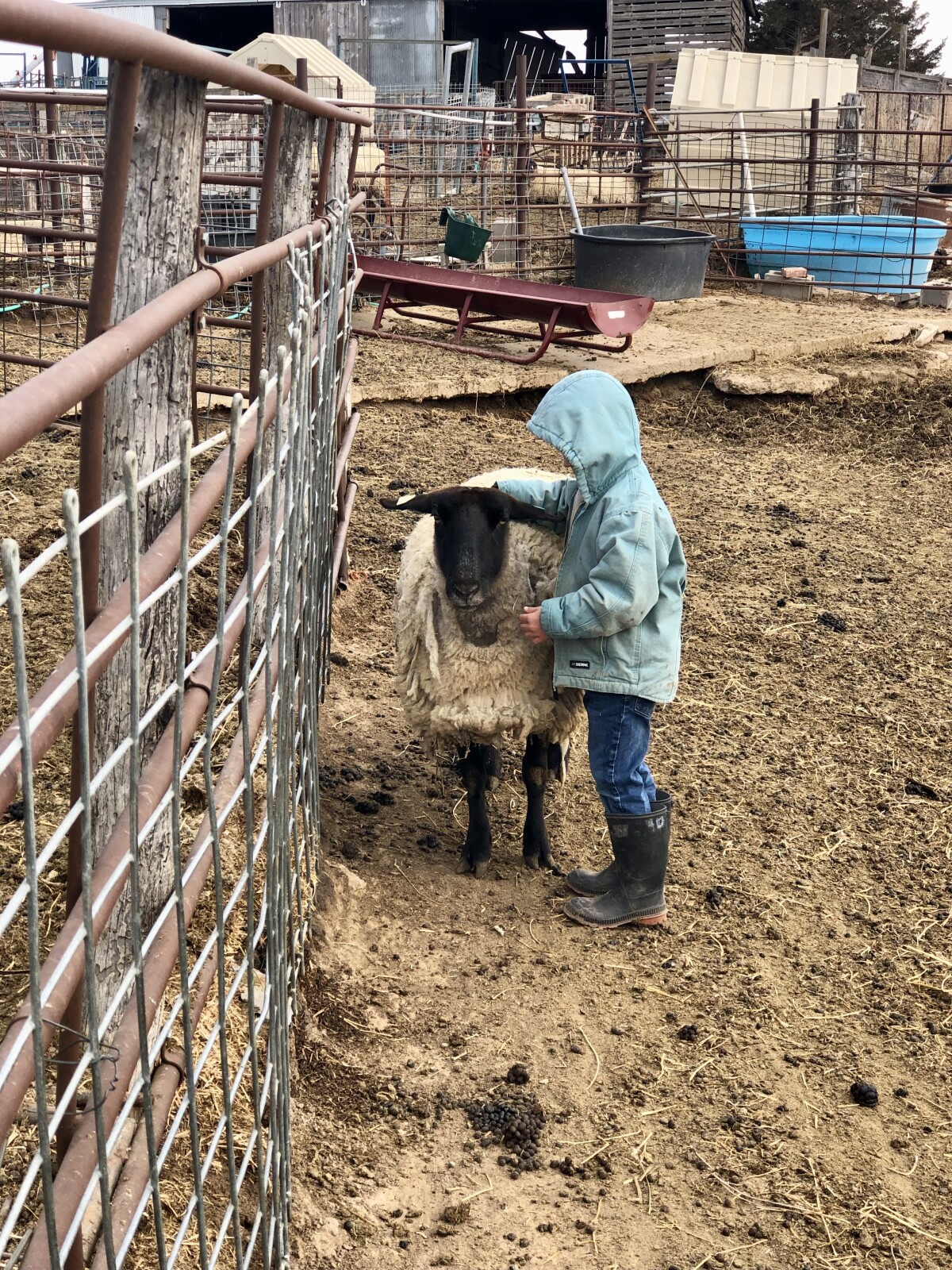
This post may contain affiliate links, which means that I may receive a commission if you make a purchase using these links, with NO additional cost to you.
Sheep are often seen as difficult and stubborn animals to take care of. But, in reality, they can be surprisingly simple to manage if you know the basics. The key is to pay close attention to health (more on that later). Whether you're looking for a small pen or want to let your sheep roam free on pasture land, there are certain necessities that will keep them happy, healthy and content. Read on to find out how to take care of your sheep like a pro!
Fencing for Your Sheep
The first thing you need is a sturdy fence for your sheep, whether it’s in a pasture or a small pen. Sheep have a knack for escaping any loose fence. If you’re using a confined pen, cattle panels are best because they provide a solid fence that is difficult for them to break, and usually can’t get their head stuck in, keeping them safe and secure. If you’re going with a pasture, woven wire works well but can be hard to tighten and maintain. You could also train your sheep to respect an electric fence - just make sure you have at least 5 strands running across the area, two or three of which should be hot. If your sheep escape, simply put them back in the pen and watch for about 10 minutes. They will usually go right back to where they got out and you can then fix it.
Food & Water Sources
Your sheep will need access to clean water - preferably from a tank no higher than 12 inches off the ground so they don’t have trouble reaching it. If they're out in pasture, grass will do fine; they’ll even prefer weeds over grass, so you can easily clean a weedy pasture up! If you keep them in a confined area, hay and grain should be provided at certain times during the year (more on that later).
Shelter and Protection
Sheep are very easy prey and need protection from predators. If your sheep are on pasture this could be a llama, donkey, livestock guardian dog, or a combination. Even in a confined fence, having a guard animal with them will help deter predators sneaking into the pens when you’re not around. When have a few pens that are difficult to seal up from the outside and are often targets for predators. We run a guard llama or donkey in those pens. I have a guardian dog for my bird flock, and will add another specifically for the sheep in the future. Additionally, make sure some form of shelter is available for lambing season so the mothers (and their offspring) can stay warm and dry when necessary.
As I've grown in my journey as an entrepreneur, mom, gardener, and livestock owner, I struggled to find a planner that met my needs and kept me organized. So I MADE MY OWN. You can take a look at it on the link blow and buy it on amazon below
Don't want the whole calendar part? I got you! I pulled the gardening and animal care pages out and put them in a book all their own.
Wanting a community to lean into? Join the FREE Helping Your Family Homestead for Food group! This community is for the Mommas, looking to stay home and raise their kids, but unsure how to keep everyone fed and make ends meet. I share tips from my journey from the office, to half the income and feeding my family from home, while maintaining good nourishing food. Tips include: gardening, bulk buying, caning,/preserving, livestock, homesteading, and home remedies. Your family is precious and this group is to help you gain the knowledge and tools to keep your family well and not reliant on outside professionals. Remedies and tips are easy and simple for the busy momma, time is precious after all, including pregnancy, birth, young kids, and illness. Trust your Momma gut again! This community offers the resources + community you need to help get started on your journey and prepare for whatever future you envision.
Starting to garden doesn't have to be hard! I gathered all the tips I've learned over my gardening learning curve and made them into a simple course to jump start your gardening your life.
Supporting Your Family Naturally From the Inside Out community!! This community is for the Mommas, looking to Support Your Family from Nature for Wellness. Tips range from nutrition, herbals, detoxing, natural cleaning, and essential oils. Basically all the things I’ve learned slowly over the past 5+ years if my journey. We have moved off Facebook, so to better serve our community and be able to discuss openly option for providing for your family in the best way possible.
Join the FREE Community
Join the FREE Community
I've had 3 very different pregnancies. After the first traumatic birth, I learned better and how to care for my body naturally and prevent common pregnancy and birth problems before they arise. This quick course will get you the tools you need to have a naturally healthy pregnancy, labor, and delivery. My first pregnancy I had a normal western medicine all the things pregnancy. My second? I flipped to completely natural, no medicine. Bonus: Preventing Preeclampsia Without the Aspirin & Healing from Birth Trauma
Click here to get the stories straight to your email:
For more on wellness tips click here:
For more on homesteading on your budget click here:
For more simple DIY updates click here:
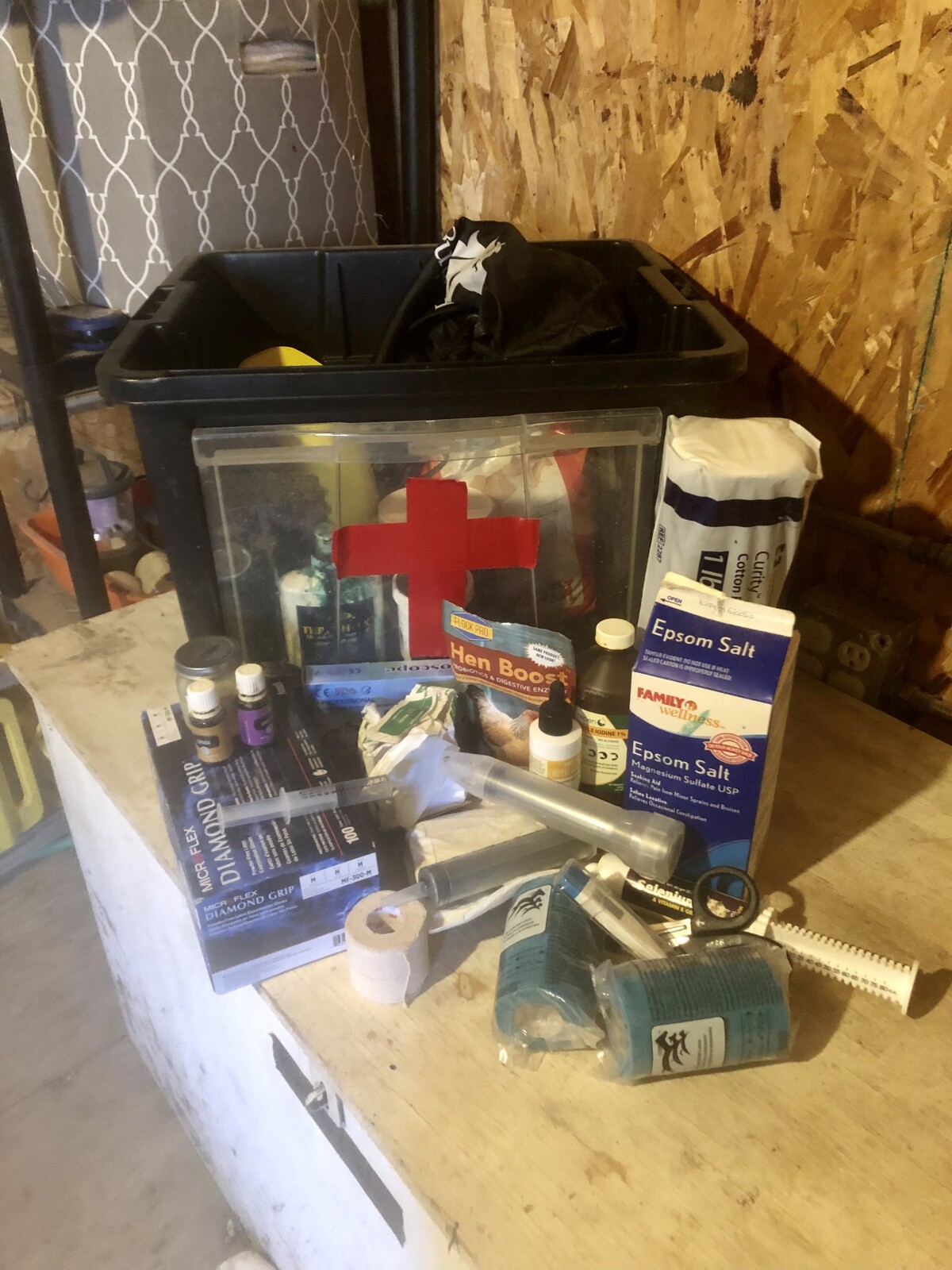
This post may contain affiliate links, which means that I may receive a commission if you make a purchase using these links, with NO additional cost to you.
Animals can bring so much joy and entertainment to our lives. From chickens and guineas, all the way up to horses and bottle lambs, it’s hard not to love having animals around. Even though they bring us joy, there are bound to be some minor injuries along the way. That’s why I always keep a first aid kit handy, just in case! In this blog post, I’ll share with you some of my must-have animal first aid supplies for all species, as well as some specific supplies for birds that live on my homestead.
The Basics For Every Species
No matter what type of animal you have, there are certain items that should be kept in your first aid kit at all times.
- Vet Wrap - Not only is vet wrap incredibly versatile—it can be used for bandaging sprains or holding an ice pack in place—but it also stays put even when wet or dirty. This makes it perfect for animals who spend a lot of time outdoors or get muddy often. Or even the perfect band aid for yourself.
- Gauze Pads - These are essential for cleaning out any wounds that your animals may get. They’re also great for absorbing blood and other fluids from deeper cuts or scrapes so that you can properly assess the damage and treat accordingly.
- Diapers - Believe it or not, diapers are very useful in animal first aid kits! They make an excellent padding material when bandaging large areas (like a horse's leg) because they have soft material on both sides and are thick enough that they won't tear easily. Plus, they're absorbent so they'll help keep the wound area dry during treatment. They are perfect for keeping a foot clean in the case of a foot abscess too. For how to treat that, click here.
- Duck Tape – Honestly this is in the vet kit and tool box. In the first aid kit, duck tape is the top layer in an abscess boot, or the final rings on a leg wrap.
- Calendula Salve - This salve is amazing for treating minor cuts and scrapes on any species of animal. It has anti-inflammatory properties which will help reduce swelling and discomfort while promoting healing and tissue regeneration at the same time. I have used this on scrapes and gashes from untrimmed rooster spurs. Read how to make it here.
- Epson Salt - Epson salt is essential if your animals ever has an abscess. Typically, you dissolve the salt in warm water to make a soak solution.
- Clean Bucket – Having a clean bucket nearby helps you transport water or cleaning solutions easily while keeping your hands free during treatment of your animal’s injury. It also comes in handy if you need to soak any gauze pads before using them on a wound—just fill up the bucket with water, add whatever disinfectant you prefer, then drop the gauze pads into the solution until ready to use!
- Cotton Batting – Cotton batting is great for wrapping around sprains since it provides cushioning without being too tight against the skin which could cause further discomfort for your pet (or livestock). Also works well as stuffing inside bandages if needed!
- Clean Rags – These come in handy when wiping away dirt from wounds before applying topical treatments like calendula salve or iodine solution (which we'll talk about later). They can also be used to clean off tools/supplies between uses so that everything stays sanitary throughout treatment processes.
- Syringes – Can be used to deliver needed antibiotics, but most often I’m using them for drenching, or washing out wound areas to small for a hose.
- Iodine – This is specifically for disinfecting tools or cleaning out abscesses.
- Lavender and Copieba Essential Oil – I use these two with calendula salve, to speed healing and decrease the pain on open wounds.
For The Birds
If you have chickens, geese, turkeys or guineas in your flock then there are two additional products that I would highly recommend having on hand: Nutri-Drink and Hydro-Boost. Nutri-Drink is an electrolyte supplement that helps poultry stay hydrated in hot weather while Hydro-Boost provides essential vitamins and minerals necessary for proper nutrition. Both products can be added to water and they taste great so birds will drink them willingly! Any time a bird is injured or stressed (like newly shipped chicks), I add some to the water for the first day and help out.
Having the right supplies on hand when caring for injured animals can make all the difference between a successful recovery and an unsuccessful one. With this list of must-haves in mind, you will be well prepared if an injury occurs with any of your animals—especially birds! Gather up these items now so that they’re ready when needed; doing so will give you peace of mind knowing that if the worst happens you’ll have everything necessary to provide the best possible care to your beloved pets. Good luck!
As I've grown in my journey as an entrepreneur, mom, gardener, and livestock owner, I struggled to find a planner that met my needs and kept me organized. So I MADE MY OWN. You can take a look at it on the link blow and buy it on amazon below
Don't want the whole calendar part? I got you! I pulled the gardening and animal care pages out and put them in a book all their own.
Wanting a community to lean into? Join the FREE Helping Your Family Homestead for Food group! This community is for the Mommas, looking to stay home and raise their kids, but unsure how to keep everyone fed and make ends meet. I share tips from my journey from the office, to half the income and feeding my family from home, while maintaining good nourishing food. Tips include: gardening, bulk buying, caning,/preserving, livestock, homesteading, and home remedies. Your family is precious and this group is to help you gain the knowledge and tools to keep your family well and not reliant on outside professionals. Remedies and tips are easy and simple for the busy momma, time is precious after all, including pregnancy, birth, young kids, and illness. Trust your Momma gut again! This community offers the resources + community you need to help get started on your journey and prepare for whatever future you envision.
Starting to garden doesn't have to be hard! I gathered all the tips I've learned over my gardening learning curve and made them into a simple course to jump start your gardening your life.
Supporting Your Family Naturally From the Inside Out community!! This community is for the Mommas, looking to Support Your Family from Nature for Wellness. Tips range from nutrition, herbals, detoxing, natural cleaning, and essential oils. Basically all the things I’ve learned slowly over the past 5+ years if my journey. We have moved off Facebook, so to better serve our community and be able to discuss openly option for providing for your family in the best way possible.
Join the FREE Community
Join the FREE Community
I've had 3 very different pregnancies. After the first traumatic birth, I learned better and how to care for my body naturally and prevent common pregnancy and birth problems before they arise. This quick course will get you the tools you need to have a naturally healthy pregnancy, labor, and delivery. My first pregnancy I had a normal western medicine all the things pregnancy. My second? I flipped to completely natural, no medicine. Bonus: Preventing Preeclampsia Without the Aspirin & Healing from Birth Trauma
Click here to get the stories straight to your email:
For more on wellness tips click here:
For more on homesteading on your budget click here:
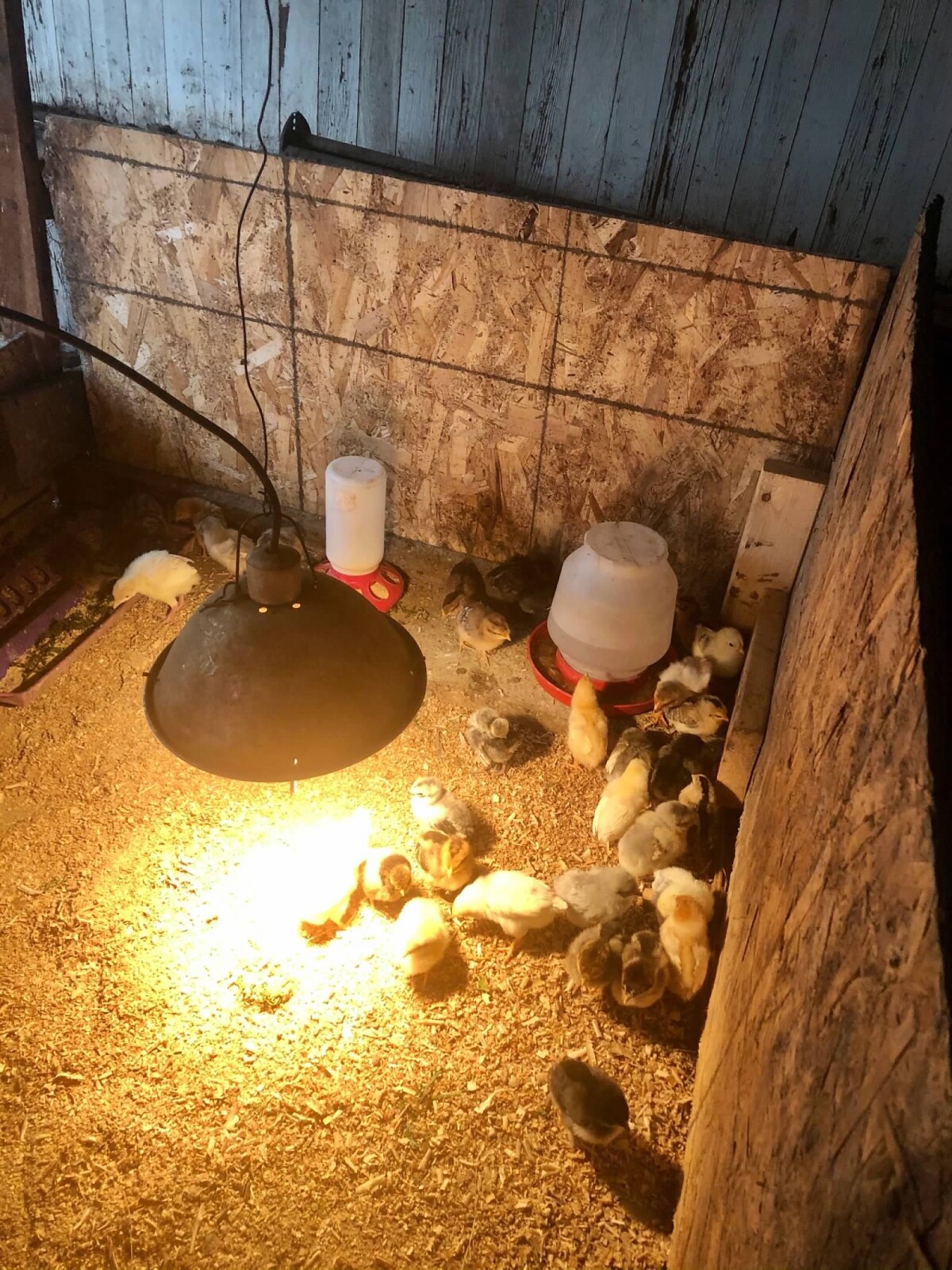
This post may contain affiliate links, which means that I may receive a commission if you make a purchase using these links, with NO additional cost to you.
Starting baby poultry is a great way to kick off your homesteading journey. It can be a bit more labor intensive than other animals, but it doesn’t have to be difficult if you know what tools and supplies you’ll need ahead of time. Here’s a quick breakdown of the basics for raising healthy chicks, guinea, duck, goose, and turkey.
Heat Requirements
Baby poultry need heat to thrive—specifically 90 to 95 degrees Fahrenheit. To help maintain this temperature in their brooding area, you will need heat lamps with red light bulbs (which helps prevent pecking) and a small space called a brooder box. This can be an old stock tank, or boarded area. Throughout the day, check the temperature by observing how the chicks are behaving. If they’re all huddled together under the lamp, they’re cold; if they’re spread out around the room or away from the heat lamp entirely, they’re too warm. At an ideal temperature, some chicks should be under the lamp while others explore and eat/drink on their own. After about a week they can move to a bigger area, mine is shown in the picture.
Watering
In addition to heat requirements, your chicks will also need plenty of water throughout the day—especially when they first arrive. To keep them safe while drinking, elevate their water dish slightly and add small rocks in the bottom so that they don’t accidentally drown themselves while drinking.
Feeding Requirements
Choosing food for your baby poultry can seem tricky at first but it doesn't have to be difficult! The easiest route is to buy chick starter food specially formulated for baby poultry. This type of feed contains all the essential nutrients that your birds need to grow healthy and strong (and no antibiotics are needed). Be sure to monitor your birds closely for signs of malnutrition or poor health—if you notice any problems with their condition after making changes to their diet or environment contact your vet immediately! After about 2-3 weeks, I start to transition the babies to my home mixed feed.
For bedding, the first day or two simply used newspaper, then add shavings once all the chicks have figured out where the food is. Otherwise, babies will peck at the shavings instead of the food, and starve out.
Upon arrival
You will take the chicks out of the box, dip their beak in the water and then the feed, before setting them down. They will all crowd together until you leave, so when checking on them later, you will need to be quiet to see the chicks actual behavior. In general, hold the chicks as little as possible the first 48 hours, to reduce their stress.
Raising baby poultry can seem intimidating at first but it doesn't have to be hard! With just a few basic supplies like heat lamps and chick starter feed, you'll be well on your way towards having healthy birds that are ready for life on your homestead. Keep an eye on them regularly and make sure they're getting enough food and water throughout each day—with proper care you'll soon have a flock of happy birds! Best of luck!
As I've grown in my journey as an entrepreneur, mom, gardener, and livestock owner, I struggled to find a planner that met my needs and kept me organized. So I MADE MY OWN. You can take a look at it on the link blow and buy it on amazon below
Don't want the whole calendar part? I got you! I pulled the gardening and animal care pages out and put them in a book all their own.
Wanting a community to lean into? Join the FREE Helping Your Family Homestead for Food group! This community is for the Mommas, looking to stay home and raise their kids, but unsure how to keep everyone fed and make ends meet. I share tips from my journey from the office, to half the income and feeding my family from home, while maintaining good nourishing food. Tips include: gardening, bulk buying, caning,/preserving, livestock, homesteading, and home remedies. Your family is precious and this group is to help you gain the knowledge and tools to keep your family well and not reliant on outside professionals. Remedies and tips are easy and simple for the busy momma, time is precious after all, including pregnancy, birth, young kids, and illness. Trust your Momma gut again! This community offers the resources + community you need to help get started on your journey and prepare for whatever future you envision.
Starting to garden doesn't have to be hard! I gathered all the tips I've learned over my gardening learning curve and made them into a simple course to jump start your gardening your life.
I've had 3 very different pregnancies. After the first traumatic birth, I learned better and how to care for my body naturally and prevent common pregnancy and birth problems before they arise. This quick course will get you the tools you need to have a naturally healthy pregnancy, labor, and delivery. My first pregnancy I had a normal western medicine all the things pregnancy. My second? I flipped to completely natural, no medicine. Bonus: Preventing Preeclampsia Without the Aspirin & Healing from Birth Trauma
Supporting Your Family Naturally From the Inside Out community!! This community is for the Mommas, looking to Support Your Family from Nature for Wellness. Tips range from nutrition, herbals, detoxing, natural cleaning, and essential oils. Basically all the things I’ve learned slowly over the past 5+ years if my journey. We have moved off Facebook, so to better serve our community and be able to discuss openly option for providing for your family in the best way possible.
Join the Community
Join the Community
Click here to get the stories straight to your email:
For more on wellness tips click here:
For more on homesteading on your budget click here:
For more simple DIY updates click here:
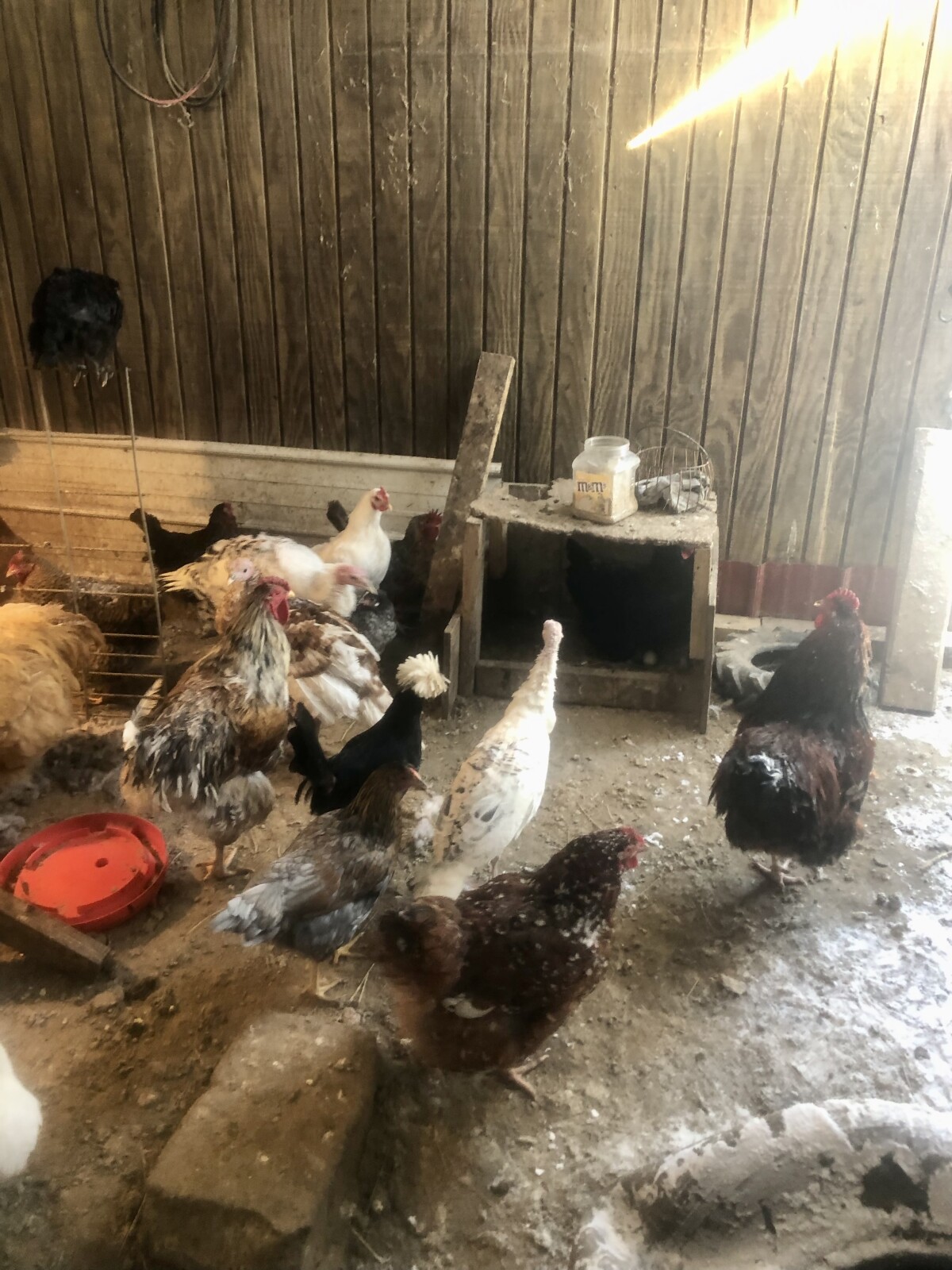
This post may contain affiliate links, which means that I may receive a commission if you make a purchase using these links, with NO additional cost to you.
Chickens are one of the easiest animals to raise, even if you have limited space. Whether you’re living on a city lot or a large farm, chickens can be a great addition to your homestead. Learning how to start is easy and doesn’t require much investment. Let’s look at the basics of raising chickens in your backyard.
Coop Requirements: Chickens need some type of draft free shelter, often called a coop. If you’re just getting started, this could be as simple as an old lean-too shed or barn. You can also build something more elaborate like a chicken palace! No matter what design you choose, make sure it has enough ventilation and enough room for your flock to move around comfortably without overcrowding. If they are completely confined you need 4 square feet of coop space per bird. If you are free ranging, you can shrink this a little, but not a lot.
The coop should also include roosts, this could be as simple as attaching 2x4 boards across the corner of the coop, or using an old ladder found in an old barn. Make sure you have 10 inches of roost space per bird. Nesting boxes are also needed for chickens. Again, this can be as simple as, an old tire or barrel hung up or on the ground. If you want to build one, a 12x12x12 inch box is preferred. You will need 1 box for every 4 laying hens.
Feed & Water Requirements: Another important component when raising chickens is providing them with fresh water and feed. For water, they need either a tray of water or traditional chicken waterers that are available online or through local feed stores. When it comes to food, chickens are quite forgiving so you can keep it simple with store bought feed or mix together your own ingredients from scratch depending on your flock’s needs! I use a mix of corn, distillers, sunflowers, and oats. They also love kitchen scraps of all kinds so supplementing their diet with leftovers from meals is always appreciated! I’ll give more on feed in a later blog.
The final thing to consider when caring for chickens is predator control. To keep predators away from your chickens, build secure fencing around their coop and run area — this will help keep them safe from potential predators such as raccoons or coyotes that may lurk nearby. If you are wanting to free range, you can, but chickens are easy targets for predators. Having a goose or a good rooster to run with your will help alarm the rest of the flock when danger is near in the sky. If you are on a large space, having a livestock guardian dog deters the larger predators like foxes and coyotes.
Raising chickens in your backyard is an easy way to provide fresh eggs for yourself while also having fun taking care of them. All they need is a comfortable home (coop), roosts, nesting boxes, food and water – all items which you can easily find around your house or purchase inexpensively at any farm store. So why not give it a try? With just the basics listed above, you'll be on your way towards becoming a happy homesteader!
As I've grown in my journey as an entrepreneur, mom, gardener, and livestock owner, I struggled to find a planner that met my needs and kept me organized. So I MADE MY OWN. You can take a look at it on the link blow and buy it on amazon below
Don't want the whole calendar part? I got you! I pulled the gardening and animal care pages out and put them in a book all their own.
Wanting a community to lean into? Join the FREE Helping Your Family Homestead for Food group! This community is for the Mommas, looking to stay home and raise their kids, but unsure how to keep everyone fed and make ends meet. I share tips from my journey from the office, to half the income and feeding my family from home, while maintaining good nourishing food. Tips include: gardening, bulk buying, caning,/preserving, livestock, homesteading, and home remedies. Your family is precious and this group is to help you gain the knowledge and tools to keep your family well and not reliant on outside professionals. Remedies and tips are easy and simple for the busy momma, time is precious after all, including pregnancy, birth, young kids, and illness. Trust your Momma gut again! This community offers the resources + community you need to help get started on your journey and prepare for whatever future you envision.
Starting to garden doesn't have to be hard! I gathered all the tips I've learned over my gardening learning curve and made them into a simple course to jump start your gardening your life.
I've had 3 very different pregnancies. After the first traumatic birth, I learned better and how to care for my body naturally and prevent common pregnancy and birth problems before they arise. This quick course will get you the tools you need to have a naturally healthy pregnancy, labor, and delivery. My first pregnancy I had a normal western medicine all the things pregnancy. My second? I flipped to completely natural, no medicine. Bonus: Preventing Preeclampsia Without the Aspirin & Healing from Birth Trauma
Supporting Your Family Naturally From the Inside Out community!! This community is for the Mommas, looking to Support Your Family from Nature for Wellness. Tips range from nutrition, herbals, detoxing, natural cleaning, and essential oils. Basically all the things I’ve learned slowly over the past 5+ years if my journey. We have moved off Facebook, so to better serve our community and be able to discuss openly option for providing for your family in the best way possible.
Join the Community
Join the Community
Click here to get the stories straight to your email:
For more on wellness tips click here:
For more on homesteading on your budget click here:
For more simple DIY updates click here:

This post may contain affiliate links, which means that I may receive a commission if you make a purchase using these links, with NO additional cost to you.
Animals can bring so much joy and entertainment to our lives. From chickens and guineas, all the way up to horses and bottle lambs, it’s hard not to love having animals around. Even though they bring us joy, there are bound to be some minor injuries along the way. That’s why I always keep a first aid kit handy, just in case! In this blog post, I’ll share with you some of my must-have animal first aid supplies for all species, as well as some specific supplies for birds that live on my homestead.
The Basics For Every Species
No matter what type of animal you have, there are certain items that should be kept in your first aid kit at all times.
• Vet Wrap - Not only is vet wrap incredibly versatile—it can be used for bandaging sprains or holding an ice pack in place—but it also stays put even when wet or dirty. This makes it perfect for animals who spend a lot of time outdoors or get muddy often. Or even the perfect band aid for yourself.
• Gauze Pads - These are essential for cleaning out any wounds that your animals may get. They’re also great for absorbing blood and other fluids from deeper cuts or scrapes so that you can properly assess the damage and treat accordingly.
• Diapers - Believe it or not, diapers are very useful in animal first aid kits! They make an excellent padding material when bandaging large areas (like a horse's leg) because they have soft material on both sides and are thick enough that they won't tear easily. Plus, they're absorbent so they'll help keep the wound area dry during treatment. They are perfect for keeping a foot clean in the case of a foot abscess too. For how to treat that, click here.
• Duck Tape – Honestly this is in the vet kit and tool box. In the first aid kit, duck tape is the top layer in an abscess boot, or the final rings on a leg wrap.
• Calendula Salve - This salve is amazing for treating minor cuts and scrapes on any species of animal. It has anti-inflammatory properties which will help reduce swelling and discomfort while promoting healing and tissue regeneration at the same time. I have used this on scrapes and gashes from untrimmed rooster spurs. Read how to make it here.
• Epson Salt - Epson salt is essential if your animals ever has an abscess. Typically, you dissolve the salt in warm water to make a soak solution.
• Clean Bucket – Having a clean bucket nearby helps you transport water or cleaning solutions easily while keeping your hands free during treatment of your animal’s injury. It also comes in handy if you need to soak any gauze pads before using them on a wound—just fill up the bucket with water, add whatever disinfectant you prefer, then drop the gauze pads into the solution until ready to use!
• Cotton Batting – Cotton batting is great for wrapping around sprains since it provides cushioning without being too tight against the skin which could cause further discomfort for your pet (or livestock). Also works well as stuffing inside bandages if needed!
• Clean Rags – These come in handy when wiping away dirt from wounds before applying topical treatments like calendula salve or iodine solution (which we'll talk about later). They can also be used to clean off tools/supplies between uses so that everything stays sanitary throughout treatment processes.
• Syringes – Can be used to deliver needed antibiotics, but most often I’m using them for drenching, or washing out wound areas to small for a hose.
• Iodine – This is specifically for disinfecting tools or cleaning out abscesses.
• Lavender and Copieba Essential Oil – I use these two with calendula salve, to speed healing and decrease the pain on open wounds.
For The Birds
If you have chickens, geese, turkeys or guineas in your flock then there are two additional products that I would highly recommend having on hand: Nutri-Drink and Hydro-Boost. Nutri-Drink is an electrolyte supplement that helps poultry stay hydrated in hot weather while Hydro-Boost provides essential vitamins and minerals necessary for proper nutrition. Both products can be added to water and they taste great so birds will drink them willingly! Any time a bird is injured or stressed (like newly shipped chicks), I add some to the water for the first day and help out.
Having the right supplies on hand when caring for injured animals can make all the difference between a successful recovery and an unsuccessful one. With this list of must-haves in mind, you will be well prepared if an injury occurs with any of your animals—especially birds! Gather up these items now so that they’re ready when needed; doing so will give you peace of mind knowing that if the worst happens you’ll have everything necessary to provide the best possible care to your beloved pets. Good luck!
As I've grown in my journey as an entrepreneur, mom, gardener, and livestock owner, I struggled to find a planner that met my needs and kept me organized. So I MADE MY OWN. You can take a look at it on the link blow and buy it on amazon below
Look inside the 2023 Planner
Buy the 2023 Planner
Don't want the whole calendar part? I got you! I pulled the gardening and animal care pages out and put them in a book all their own.
Look inside the Organizer
Buy the Organizer
Wanting a community to lean into? Join the FREE Helping Your Family Homestead for Food group! This community is for the Mommas, looking to stay home and raise their kids, but unsure how to keep everyone fed and make ends meet. I share tips from my journey from the office, to half the income and feeding my family from home, while maintaining good nourishing food. Tips include: gardening, bulk buying, caning,/preserving, livestock, homesteading, and home remedies. Your family is precious and this group is to help you gain the knowledge and tools to keep your family well and not reliant on outside professionals. Remedies and tips are easy and simple for the busy momma, time is precious after all, including pregnancy, birth, young kids, and illness. Trust your Momma gut again! This community offers the resources + community you need to help get started on your journey and prepare for whatever future you envision.
Join the Free Community
Starting to garden doesn't have to be hard! I gathered all the tips I've learned over my gardening learning curve and made them into a simple course to jump start your gardening your life.
Grab the Gardening Basics Course
Supporting Your Family Naturally From the Inside Out community!! This community is for the Mommas, looking to Support Your Family from Nature for Wellness. Tips range from nutrition, herbals, detoxing, natural cleaning, and essential oils. Basically all the things I’ve learned slowly over the past 5+ years if my journey. We have moved off Facebook, so to better serve our community and be able to discuss openly option for providing for your family in the best way possible.
Join the FREE Community
I've had 3 very different pregnancies. After the first traumatic birth, I learned better and how to care for my body naturally and prevent common pregnancy and birth problems before they arise. This quick course will get you the tools you need to have a naturally healthy pregnancy, labor, and delivery. My first pregnancy I had a normal western medicine all the things pregnancy. My second? I flipped to completely natural, no medicine. Bonus: Preventing Preeclampsia Without the Aspirin & Healing from Birth Trauma
Get the Healthy Pregnancy Course
Click here to get the stories straight to your email:
Sign up for the Blog
For more on wellness tips click here:
Sign up for Wellness tips
For more on homesteading on your budget click here:
Sign up for Homesteading Tips
Animals can bring so much joy and entertainment to our lives. From chickens and guineas, all the way up to horses and bottle lambs, it’s hard not to love having animals around. Even though they bring us joy, there are bound to be some minor injuries along the way. That’s why I always keep a first aid kit handy, just in case! In this blog post, I’ll share with you some of my must-have animal first aid supplies for all species, as well as some specific supplies for birds that live on my homestead.
The Basics For Every Species
No matter what type of animal you have, there are certain items that should be kept in your first aid kit at all times.
• Vet Wrap - Not only is vet wrap incredibly versatile—it can be used for bandaging sprains or holding an ice pack in place—but it also stays put even when wet or dirty. This makes it perfect for animals who spend a lot of time outdoors or get muddy often. Or even the perfect band aid for yourself.
• Gauze Pads - These are essential for cleaning out any wounds that your animals may get. They’re also great for absorbing blood and other fluids from deeper cuts or scrapes so that you can properly assess the damage and treat accordingly.
• Diapers - Believe it or not, diapers are very useful in animal first aid kits! They make an excellent padding material when bandaging large areas (like a horse's leg) because they have soft material on both sides and are thick enough that they won't tear easily. Plus, they're absorbent so they'll help keep the wound area dry during treatment. They are perfect for keeping a foot clean in the case of a foot abscess too. For how to treat that, click here.
• Duck Tape – Honestly this is in the vet kit and tool box. In the first aid kit, duck tape is the top layer in an abscess boot, or the final rings on a leg wrap.
• Calendula Salve - This salve is amazing for treating minor cuts and scrapes on any species of animal. It has anti-inflammatory properties which will help reduce swelling and discomfort while promoting healing and tissue regeneration at the same time. I have used this on scrapes and gashes from untrimmed rooster spurs. Read how to make it here.
• Epson Salt - Epson salt is essential if your animals ever has an abscess. Typically, you dissolve the salt in warm water to make a soak solution.
• Clean Bucket – Having a clean bucket nearby helps you transport water or cleaning solutions easily while keeping your hands free during treatment of your animal’s injury. It also comes in handy if you need to soak any gauze pads before using them on a wound—just fill up the bucket with water, add whatever disinfectant you prefer, then drop the gauze pads into the solution until ready to use!
• Cotton Batting – Cotton batting is great for wrapping around sprains since it provides cushioning without being too tight against the skin which could cause further discomfort for your pet (or livestock). Also works well as stuffing inside bandages if needed!
• Clean Rags – These come in handy when wiping away dirt from wounds before applying topical treatments like calendula salve or iodine solution (which we'll talk about later). They can also be used to clean off tools/supplies between uses so that everything stays sanitary throughout treatment processes.
• Syringes – Can be used to deliver needed antibiotics, but most often I’m using them for drenching, or washing out wound areas to small for a hose.
• Iodine – This is specifically for disinfecting tools or cleaning out abscesses.
• Lavender and Copieba Essential Oil – I use these two with calendula salve, to speed healing and decrease the pain on open wounds.
For The Birds
If you have chickens, geese, turkeys or guineas in your flock then there are two additional products that I would highly recommend having on hand: Nutri-Drink and Hydro-Boost. Nutri-Drink is an electrolyte supplement that helps poultry stay hydrated in hot weather while Hydro-Boost provides essential vitamins and minerals necessary for proper nutrition. Both products can be added to water and they taste great so birds will drink them willingly! Any time a bird is injured or stressed (like newly shipped chicks), I add some to the water for the first day and help out.
Having the right supplies on hand when caring for injured animals can make all the difference between a successful recovery and an unsuccessful one. With this list of must-haves in mind, you will be well prepared if an injury occurs with any of your animals—especially birds! Gather up these items now so that they’re ready when needed; doing so will give you peace of mind knowing that if the worst happens you’ll have everything necessary to provide the best possible care to your beloved pets. Good luck!
As I've grown in my journey as an entrepreneur, mom, gardener, and livestock owner, I struggled to find a planner that met my needs and kept me organized. So I MADE MY OWN. You can take a look at it on the link blow and buy it on amazon below
Look inside the 2023 Planner
Buy the 2023 Planner
Don't want the whole calendar part? I got you! I pulled the gardening and animal care pages out and put them in a book all their own.
Look inside the Organizer
Buy the Organizer
Wanting a community to lean into? Join the FREE Helping Your Family Homestead for Food group! This community is for the Mommas, looking to stay home and raise their kids, but unsure how to keep everyone fed and make ends meet. I share tips from my journey from the office, to half the income and feeding my family from home, while maintaining good nourishing food. Tips include: gardening, bulk buying, caning,/preserving, livestock, homesteading, and home remedies. Your family is precious and this group is to help you gain the knowledge and tools to keep your family well and not reliant on outside professionals. Remedies and tips are easy and simple for the busy momma, time is precious after all, including pregnancy, birth, young kids, and illness. Trust your Momma gut again! This community offers the resources + community you need to help get started on your journey and prepare for whatever future you envision.
Join the Free Community
Starting to garden doesn't have to be hard! I gathered all the tips I've learned over my gardening learning curve and made them into a simple course to jump start your gardening your life.
Grab the Gardening Basics Course
Supporting Your Family Naturally From the Inside Out community!! This community is for the Mommas, looking to Support Your Family from Nature for Wellness. Tips range from nutrition, herbals, detoxing, natural cleaning, and essential oils. Basically all the things I’ve learned slowly over the past 5+ years if my journey. We have moved off Facebook, so to better serve our community and be able to discuss openly option for providing for your family in the best way possible.
Join the FREE Community
I've had 3 very different pregnancies. After the first traumatic birth, I learned better and how to care for my body naturally and prevent common pregnancy and birth problems before they arise. This quick course will get you the tools you need to have a naturally healthy pregnancy, labor, and delivery. My first pregnancy I had a normal western medicine all the things pregnancy. My second? I flipped to completely natural, no medicine. Bonus: Preventing Preeclampsia Without the Aspirin & Healing from Birth Trauma
Get the Healthy Pregnancy Course
Click here to get the stories straight to your email:
Sign up for the Blog
For more on wellness tips click here:
Sign up for Wellness tips
For more on homesteading on your budget click here:
Sign up for Homesteading Tips
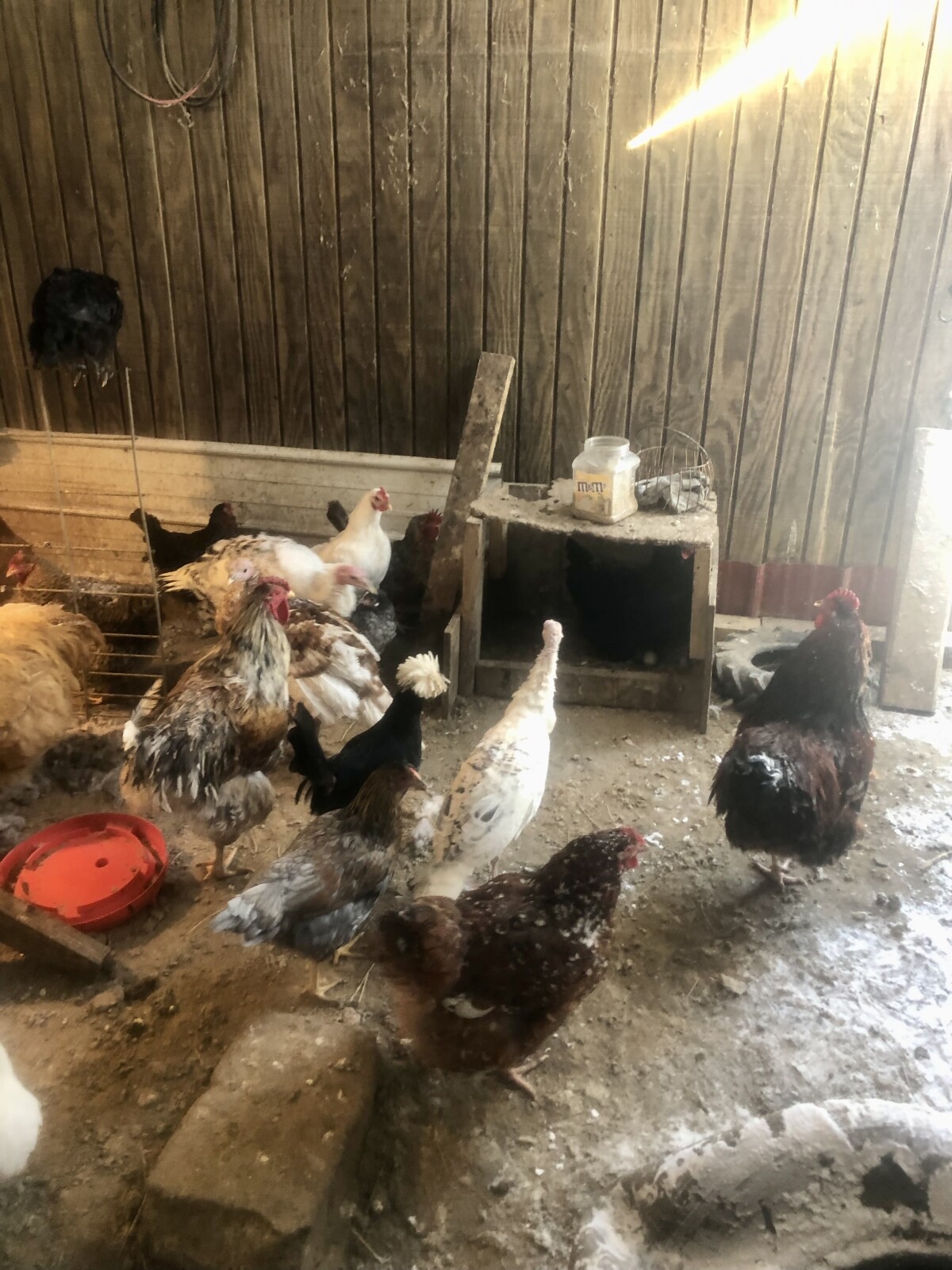
This post may contain affiliate links, which means that I may receive a commission if you make a purchase using these links, with NO additional cost to you.
Contrary to popular belief, you can have chickens in most places. Even if you live in the city and don’t think you can accommodate them. Chickens are one of the few types of livestock that take up very little space and still give you so many benefits. Laying hens will provide eggs for your family, plus make great disposals for kitchen and garden scraps. If you want to raise meat birds, it’s possible in most places too! Some cities may have limits as to how many and what kinds (no roosters) but they usually allow some type of chicken keeping. Check with your local ordinance for specifics. Let’s explore more about urban chicken keeping!
Knowing Your City Ordinances
Before you even think about getting chickens, check with your city ordinances. Some cities/towns may have limits or restrictions as to how many chickens you can have or whether or not you can have roosters on the property. This is especially important if there are neighborhood associations that could potentially cite you if they find out about your chickens before you get it approved by the local government. Make sure to check those first!
Space Considerations
Chickens don’t need much space; however, there are some things that should be taken into consideration such as the size of their coop and run area, plus having enough space for a place where they can scratch and dust bathe. Having at least 4 square feet per bird inside their coop is recommended, plus 10-15 square feet per bird in their run area outside. To little space and they become stressed which means less eggs for you.
They also need a secure place where they can get away from predators like raccoons, possums, hawks, and cats. A small backyard is usually sufficient to accommodate three or four hens; however, if you're raising meat birds that require more space than laying hens then your backyard needs will increase accordingly. If possible, try to keep this area away from any windy areas which could make them cold and uncomfortable during winter months.
Feed & Water Considerations
Chickens need a specific type of food that's formulated specifically for their nutritional needs — while they might enjoy eating leftovers from the table every once in a while, those foods should not make up the majority of their diet. Additionally, depending on where you live, there may be some restrictions for storing large amounts of feed due to vermin control laws or zoning regulations; again, this is something you should check into before committing to owning chickens. Even if you don’t have a large space to buy bulk ingredients, you can find preformulated bagged food at local farm stores.
A feeder and water station should also be taken into consideration when planning out your urban chicken keeping set up. You would need one feeder per 6-10 birds plus a water station big enough for all of them to drink from without overcrowding each other while they do so. The type of water or feeder is not important, you can find or reuse old stuff too, just make sure that these containers have lids so that food doesn’t get wet due to rain or rodents trying to get into it during nighttime hours when the chickens aren’t around (they usually go back inside at dusk).
Urban chicken keeping is becoming more popular due to its low-cost investment yet high return benefits of fresh eggs daily along with having an easy disposal system for kitchen scraps & garden waste. However, knowing local ordinances is always important before investing too much into any type of livestock keeping project; after all nobody wants fines added onto already expensive projects! But once everything gets approved by the local government then it's time to start thinking about ways we can make our future chicken flock comfortable while still having plenty of room left over in our yards for other activities like gardening or playing sports with friends & family members alike! All in all, urban chicken keeping is definitely something worth exploring further - go ahead & see what options might be available near where YOU live today!
As I've grown in my journey as an entrepreneur, mom, gardener, and livestock owner, I struggled to find a planner that met my needs and kept me organized. So I MADE MY OWN. You can take a look at it on the link blow and buy it on amazon below
Don't want the whole calendar part? I got you! I pulled the gardening and animal care pages out and put them in a book all their own.
Wanting a community to lean into? Join the FREE Helping Your Family Homestead for Food group! This community is for the Mommas, looking to stay home and raise their kids, but unsure how to keep everyone fed and make ends meet. I share tips from my journey from the office, to half the income and feeding my family from home, while maintaining good nourishing food. Tips include: gardening, bulk buying, caning,/preserving, livestock, homesteading, and home remedies. Your family is precious and this group is to help you gain the knowledge and tools to keep your family well and not reliant on outside professionals. Remedies and tips are easy and simple for the busy momma, time is precious after all, including pregnancy, birth, young kids, and illness. Trust your Momma gut again! This community offers the resources + community you need to help get started on your journey and prepare for whatever future you envision.
Starting to garden doesn't have to be hard! I gathered all the tips I've learned over my gardening learning curve and made them into a simple course to jump start your gardening your life.
I've had 3 very different pregnancies. After the first traumatic birth, I learned better and how to care for my body naturally and prevent common pregnancy and birth problems before they arise. This quick course will get you the tools you need to have a naturally healthy pregnancy, labor, and delivery. My first pregnancy I had a normal western medicine all the things pregnancy. My second? I flipped to completely natural, no medicine. Bonus: Preventing Preeclampsia Without the Aspirin & Healing from Birth Trauma
Supporting Your Family Naturally From the Inside Out community!! This community is for the Mommas, looking to Support Your Family from Nature for Wellness. Tips range from nutrition, herbals, detoxing, natural cleaning, and essential oils. Basically all the things I’ve learned slowly over the past 5+ years if my journey. We have moved off Facebook, so to better serve our community and be able to discuss openly option for providing for your family in the best way possible.
Join the Community
Join the Community
Click here to get the stories straight to your email:
For more on wellness tips click here:
For more on homesteading on your budget click here:
For more simple DIY updates click here:

This post may contain affiliate links, which means that I may receive a commission if you make a purchase using these links, with NO additional cost to you.
Caring for animals is a rewarding experience. They bring joy, companionship, and even produce food or fiber. But taking care of animals is also a big responsibility! Whether you’re caring for chickens, goats, cows, pigs or any other homestead animal, there are certain basic needs all animals require in order to stay healthy and happy. In this article I will discuss the basics of animal care - shelter, water, food and safety - so that you can make sure your furry (or feathered) friends are getting everything they need.
Shelter & Safety
All animals need some kind of shelter to protect them from weather, predators, and other dangers. Even if you don’t have a large barn or coop, something as simple as a shaded area can provide protection from the elements. Make sure your animal has enough space to move around comfortably in their shelter. Even if that means a shade tree in the pasture for cattle.
Create boundaries around your property so that your animals don’t wander off; also make sure there aren't any hazardous materials nearby that could harm them (like toxic chemicals). Keep an eye out for predators like coyotes or foxes that could be lurking near your homestead—if necessary, install fencing or other deterrents, like livestock guardians, for added protection. Keeping animals safe also means ensuring access to clean living spaces free from sharp objects or other hazards that could cause injury or death to an unsuspecting animal. Finally, it’s important not to overcrowd the living area and shelter; too many animals can lead to fights which could result in serious injury or death.
Water
Animals require clean drinking water every day in order to stay hydrated and healthy. Make sure your animal’s water source is always full and that it’s changed regularly (at least once a week). During the winter months be sure to provide warm water as well; cold water can freeze quickly in the winter so having a heated water bowl is essential for keeping your animals hydrated when temperatures drop below freezing.
Food
Different types of animals have different dietary needs, in order to grow and stay healthy, so it’s important to research what type of food is best for your specific animal (more to come on specific animals). In general though, all animals need a balanced diet which includes carbohydrates (grains typically), proteins (for the amino acids), vitamins/minerals (supplements) and fiber (grass/hay). It’s also important to monitor how much they eat—too much food can lead to obesity or other health issues. Additionally, some types of animals may require special diets depending on their age or health status so make sure you check with your veterinarian if you have any questions about what type of food your animal needs.
Taking care of animals doesn’t have to be complex or intimidating—the basics remain relatively universal across different species! The key components are shelter, safety, water, and food; if you keep those four things in mind then you should be able to give your animals everything they need for happy lives on your homestead!
As I've grown in my journey as an entrepreneur, mom, gardener, and livestock owner, I struggled to find a planner that met my needs and kept me organized. So I MADE MY OWN. You can take a look at it on the link blow and buy it on amazon below
Don't want the whole calendar part? I got you! I pulled the gardening and animal care pages out and put them in a book all their own.
Wanting a community to lean into? Join the FREE Helping Your Family Homestead for Food group! This community is for the Mommas, looking to stay home and raise their kids, but unsure how to keep everyone fed and make ends meet. I share tips from my journey from the office, to half the income and feeding my family from home, while maintaining good nourishing food. Tips include: gardening, bulk buying, caning,/preserving, livestock, homesteading, and home remedies. Your family is precious and this group is to help you gain the knowledge and tools to keep your family well and not reliant on outside professionals. Remedies and tips are easy and simple for the busy momma, time is precious after all, including pregnancy, birth, young kids, and illness. Trust your Momma gut again! This community offers the resources + community you need to help get started on your journey and prepare for whatever future you envision.
Starting to garden doesn't have to be hard! I gathered all the tips I've learned over my gardening learning curve and made them into a simple course to jump start your gardening your life.
Supporting Your Family Naturally From the Inside Out community!! This community is for the Mommas, looking to Support Your Family from Nature for Wellness. Tips range from nutrition, herbals, detoxing, natural cleaning, and essential oils. Basically all the things I’ve learned slowly over the past 5+ years if my journey. We have moved off Facebook, so to better serve our community and be able to discuss openly option for providing for your family in the best way possible.
Join the FREE Community
Join the FREE Community
I've had 3 very different pregnancies. After the first traumatic birth, I learned better and how to care for my body naturally and prevent common pregnancy and birth problems before they arise. This quick course will get you the tools you need to have a naturally healthy pregnancy, labor, and delivery. My first pregnancy I had a normal western medicine all the things pregnancy. My second? I flipped to completely natural, no medicine. Bonus: Preventing Preeclampsia Without the Aspirin & Healing from Birth Trauma
Click here to get the stories straight to your email:
For more on wellness tips click here:
For more on homesteading on your budget click here:
For more simple DIY updates click here:

